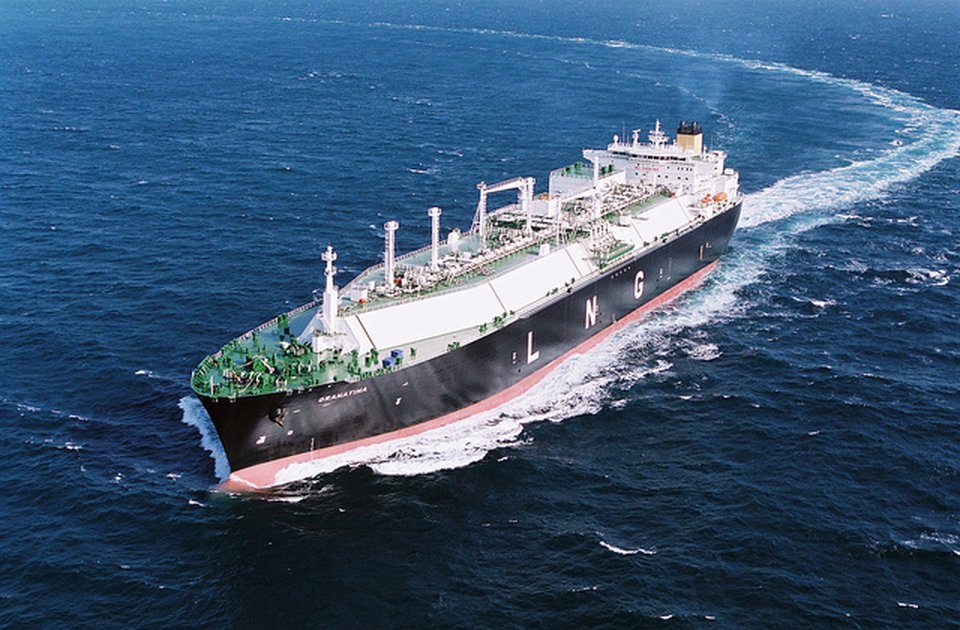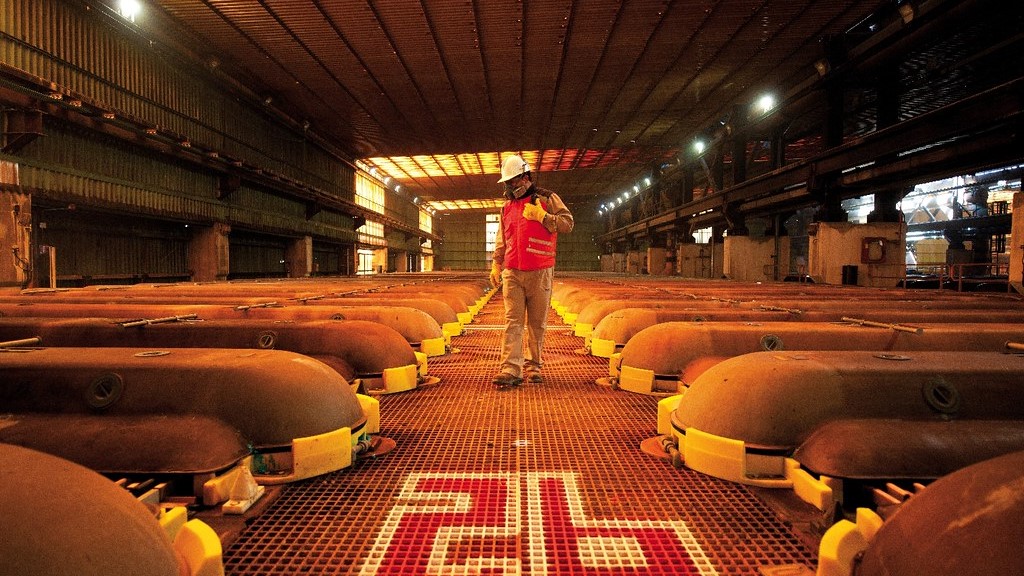China’s long-term need for LNG still huge; short-term demand uncertain due to covid-19

The “30,000-foot-view,” in business parlance, describes getting to a high enough level to see the big picture. It’s also an apt phrase — both literally and figuratively — for describing the long-term need for Canadian LNG to displace the use of higher-carbon producing coal for power generation.
From the air, things can seem different, says Susannah Pierce, director of corporate affairs for LNG Canada.
Most Canadian cities enjoy fairly good air quality, but in other parts of the world, “flying over a city that relies on coal-fired power for electricity or industrial and residential heating offers another experience,” Pierce says.
China’s shift from coal is being driven primarily by its air pollution crisis, she notes.
According to the International Energy Agency’s latest World Energy Outlook, natural gas demand in China will triple by 2040
According to the International Energy Agency’s latest World Energy Outlook, natural gas demand in that country will triple by 2040. Natural gas is already being used to complement China’s emerging renewable energy sector, she notes, and is increasingly being used in Chinese factories and for district heating.
In addition, the IEA says 80% more natural gas will be required over the next 20 years in China, India and Southeast Asia in order to displace higher carbon-producing coal.
Pierce says that research conducted for LNG Canada — which is building the first train of a $40-billion LNG project near Kitimat, B.C. — indicates that the project’s own exports to China will emit approximately 35–55% fewer greenhouse gas (GHG) emissions than China’s domestic coal.
Moreover, the largest GHG reductions realized in China from Canadian LNG will come from displacing coal in residential heating (56%), followed by electricity generation (52%), and industrial heat generation (36%), Pierce says.
Immediate response to covid-19
In the short-term, all project developers — including those in Canada — are focused one thing: impacts from the coronavirus pandemic.
LNG Canada announced in mid-March a temporary reduction of 50% in its workforce of more than 1,000 construction workers in order to “flatten the curve” to deal with a possible outbreak on the site.
Local employees will be retained, with fly-in employees on temporary layoff.
Despite the substantial reduction in the workforce, the project is still slated to begin delivering Canadian gas to export markets by mid-decade.
“LNG Canada remains committed to delivering its first cargo by the middle of this decade,” Pierce said.
Covid-19 has already caused a delay in the construction of one new Canadian LNG plant, and the delay in a final investment decision (FID).
In late March, the backers of the $1.6-billion Woodfibre LNG project announced a one-year delay on construction of the facility, which was to start this summer.
The company said “work stoppages caused by covid-19,” including the shutdown of a fabrication yard in China that was making products for the facility in Squamish, B.C., forced a one-year delay in construction.
In addition, the company that Woodfibre had chosen to complete engineering, procurement and construction for the project has filed for Chapter 11 bankruptcy and needs to rearrange its financing.
Company president David Keane emphasized that “the Woodfibre LNG project is still moving ahead.”
“We are continuing to work with our Indigenous and commercial partners to meet all of our pre-construction commitments,” he said.
On the East Coast, Pieridae Energy Limited announced in mid-April that its FID for the Goldboro LNG project in Nova Scotia will be delayed beyond Sept. 30, 2020, as a result of a depressed market and covid-19 impacts.
The world’s top buyers of LNG are seeking to defer shipments as the coronavirus pandemic cripples demand and forces more of the heating and power fuel into storage that is nearing capacity
A further announcement will be made once covid-19 conditions improve and markets stabilize, Pieridae said.
In addition, the company is in discussions with different levels of government on how its proposed project could benefit from infrastructure funding that might become available with the restart to the economy, says its chief executive officer.
“We believe our project fits very well with the criteria the government has put in place as our project affects multiple provinces … it’s an opportunity for government to have a win-win for them,” Alfred Sorensen said in a conference call to discuss Q4 and full-year 2019 results. “We get Canada into a new industry and at the same time we bring work back to parts of the country that have suffered because of the [covid-19] virus shutting down the majority of the economy.”
Current LNG market dynamics
At present, the world’s top buyers of LNG are seeking to defer shipments as the coronavirus pandemic cripples demand and forces more of the heating and power fuel into storage that is nearing capacity.
The move signals that efforts to contain the spread of the virus may impact energy consumption far into this year and possibly 2021, worsening an oversupply of natural gas and oil that’s punished prices, Bloomberg reported.
Buyers in South Korea and Japan, including Korea Gas Corp. and Tokyo Gas Co., are in discussions with term suppliers to postpone cargoes slated for delivery as far out as October, according to people with knowledge of the matter. The delay requests vary from just a few days to as late as next year, said the people, who asked not to be identified as the discussions are private.
Earlier this year, buyers in China, where the virus first hit, declared force majeure on some cargoes.
In early April, however, it was reported that China’s buyers of LNG have become some of the most active in the market, signalling a turnaround from February and March, when the country’s top importers sought to delay or cancel shipments due to demand and logistical constraints caused by the coronavirus outbreak.
Gas demand during the pandemic
Amidst the carnage being experienced by oil and companies due to the COVID-19 pandemic and the recent price war, there is a bit of good news. We still need to heat our homes and keep the lights on.
“People may be working from home instead of offices, but they are still using natural gas to heat their homes and use their stoves and when they turn their lights on,” said Bill Gwozd, an energy analyst with Argo Consulting.
“I don’t think gas demand will change much, even if it [the business shutdown caused by the virus] lasts a year.”
Gwozd said about 85% of gas demand comes from the power sector and for home heating and other residential uses, which will just be shifted from offices to residences.
However, about 15% of gas used in North America is in the petrochemical and fertilizer industries, which will definitely be affected.
Globally, Gwozd sees the demand for gas, much of it being delivered now via LNG, remaining strong for the longer term.
“Long term the demand [for LNG and gas] will still be there because population growth doesn’t stop and one day Canadian gas reserves, which are huge, will be tapped to their full potential.”
Under the Paris Climate Accord, China essentially received a free pass to grow its power production in line with its economic growth for the balance of this decade
Mark Pinney, manager of markets and transportation with the Canadian Association of Petroleum Producers (CAPP), said one factor Gwozd isn’t considering is the impact on U.S. domestic gas availability as LNG exports are disrupted.
“[A] reduction in LNG exports from the United States to global markets, as a result of covid 19, will mean more U.S. production will be available to meet its domestic demand and will therefore have a short-term impact on Canadian natural gas production (approximately half) being exported to the U.S.,” he wrote in an email.
In the long-term, CAPP says China’s gas demand will grow from 23 bcf/d now to 65 bcf/d by 2040.
Cameron Gingrich, director of gas services with the Calgary office of consulting firm Solomon Associates, said short-term gas demand will be reduced, although he agrees with Gwozd that demand will move from offices to homes. However, gas demand will decline in the petrochemical, fertilizer and other manufacturing sectors.
Solomon sees gas production growing to 21 bcf/d by 2030 in Western Canada, despite the short term impact of the pandemic.
And it sees both trains of the LNG Canada plant being built, Woodfibre being online by then and some smaller projects going ahead, representing total gas consumption for LNG exports of four bcf/d by 2030.
Long term, if the regulatory and other barriers to LNG development in Canada can be minimized, Gingrich sees significant potential for LNG growth in the decade following 2030.
That’s because, under the Paris Climate Accord, China essentially received a free pass to grow its power production in line with its economic growth for the balance of this decade. That’s why it currently has 60 coal-fired plants under construction.
“After 2030, China will have a huge incentive to lower its carbon emissions,” he said.
(With files from Bloomberg and LNG Canada.)
(This article first appeared in JWN Energy)
More News
Chile to cut 2025 copper price forecast, WSJ reports
The Chilean government will cut the estimated average price to $3.90 to $4 a pound from a current projection of $4.25.
April 06, 2025 | 10:49 am
Breakthrough Cu-Ta-Li alloy could transform aerospace, defense applications, researchers say
US Army Research Laboratory developed nanostructured copper alloy with exceptional thermal stability and mechanical strength.
April 04, 2025 | 04:17 pm
{{ commodity.name }}
{{ post.title }}
{{ post.excerpt }}
{{ post.date }}



Comments